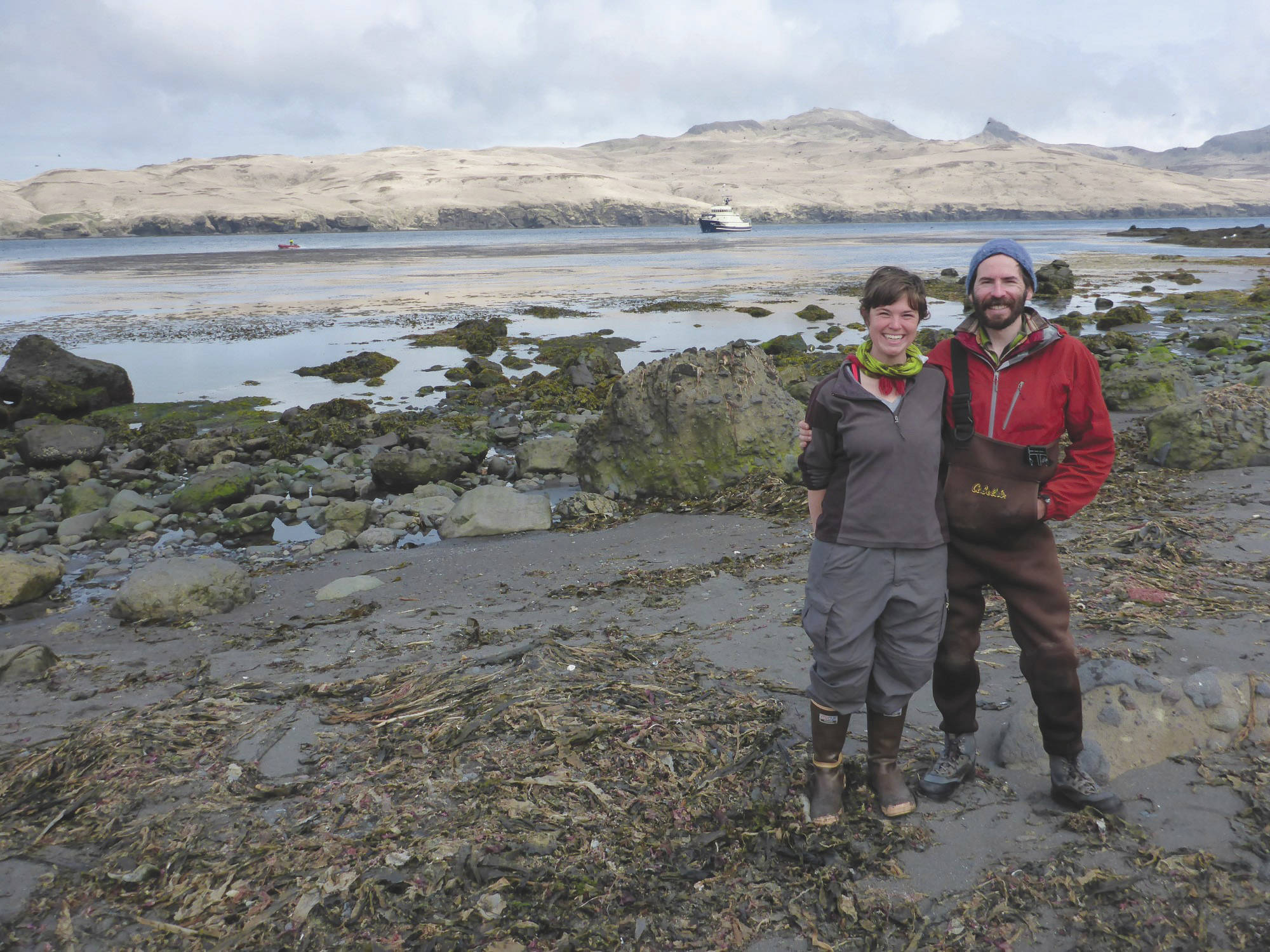Have you ever spent a weekend camping, maybe a long weekend, when the rain never seemed to quit? Where on the last day, all you can think about is how good a shower will feel, wanting to check your phone for messages, and that delicious burger you’re craving on the drive home?
At Alaska Maritime National Wildlife Refuge we do that wet weekend camping trip to the extreme, year after year.
Each summer, we send 14 or more eager field biologists, in crews of two or three, out to live on remote islands in the Bering Sea, Aleutian Islands and Gulf of Alaska from May through August.
Rain or shine — or more typically, rain or fog — their job is to keep track of seabirds, sometimes by tediously following nests all summer to determine their fate, sometimes by counting nearly endless walls of tightly packed breeding birds, and sometimes by picking bird barf up off the rocks to see what the young seabirds are being fed.
These biologists are following in the footsteps of colleagues who have monitored these same sites for more than four decades. Some of the birds wear leg bands that were put on before the current biologists were born.
Our typical field biologist has a bachelor’s or even a master’s degree in biology. Many of them spend the winter season working at seabird colonies in Hawaii, Antarctica or South America.
Every year’s batch of quirky, funky and highly committed professionals amazes me. In their spare time they are talented artists, photographers, musicians, athletes and world travelers. Other Alaska refuges have these jobs too.
I personally have gotten to enjoy summerlong field projects on several refuges: monitoring walruses at Togiak National Wildfire Refuge, banding songbirds at Alaska Peninsula/Becharof National Wildlife Refuge and Yukon Delta National Wildlife Refuge, and working fisheries projects on Kodiak and Kenai refuges.
When I was 18, my summer job was to hang out at Hidden Lake on the Kenai refuge and offer to clean fish for fishermen in exchange for the ear bones used to age the lake trout they were catching. These many formative experiences remain the most important in my professional career.
While rewarding, spending 14 weeks as a biological technician at a ruggedly remote field camp is not for everybody. Fourteen weeks is a long time with no fresh vegetables, no mail, only a bucket for a shower and a constant struggle to dry your clothes.
If it’s cold and rainy or foggy, you go out and try to work anyway. If you get a day off, there’s nowhere to go.
We hire a hardy band of adventurous souls. In one of my early seasons, I remember being told, “The first year you come for the experience. The second year you come for the paycheck. The third year you come because you don’t fit in anywhere else anymore.”
I also learned about the “sweat and shiver diet.” Spend an hour hiking up a hill with a heavy pack (that’s the “sweat” part). Then sit down in the sea breeze and mist and stare through a spotting scope all day, shivering and trying to keep enough blood in your fingers to write legibly in your field notebook.
But these are also magical times. After some extended period without your smartphone and family responsibilities, you transition from visitor to part of the system.
I’ve found it takes me about two weeks to settle in, to really disconnect. The familiar bird calls feel like home; you create a love-hate relationship with the golden-crowned sparrow singing loudly outside your camp each morning.
Our crews of biologists get to watch the seasons change from patchy white to brown to verdant green, and grow nostalgic as some of the birds depart before them. The observations they note form a record of environmental change that we cannot capture any other way.
Some of it will make its way into reports and scientific publications, but more of it will live in their minds and hearts. These naturalists will know the Alaska Maritime National Wildlife Refuge in a way few others will. They will achieve an understanding second only to the Alaska Native people, who have lived in wild coastal Alaska for thousands of years.
After some number of years, a different life usually calls. Family, mortgage, another degree. We’ll see many of these faces in the future, presenting their graduate work or guiding students of their own. But for now, they are the eyes and ears of our far-flung refuge.
This year, we are on temporary hold while the world weathers a pandemic. The health and safety of our employees, visitors and neighboring communities is our highest priority. To accomplish that, the U.S. Fish and Wildlife Service is adhering to the most current guidance from the Centers for Disease Control and Prevention, state and local authorities.
We’re in our home port, waiting out this storm to clear, watching nature in our backyards instead of remote islands.
But we know we will be back to these special places. Though there is no hot shower or burger at the end of any field camp weekend, there’s nowhere else our biologists would rather be.
Heather Renner is the Supervisory Wildlife Biologist at Alaska Maritime National Wildlife Refuge. Find more Refuge Notebook articles (1999–present) at https://www.fws.gov/refuge/Kenai/community/refuge_notebook.html.
By HEATHER RENNER
Alaska Maritime National Wildlife Refuge

